2024 NBA trade deadline guide: What each Western team could (or should) do
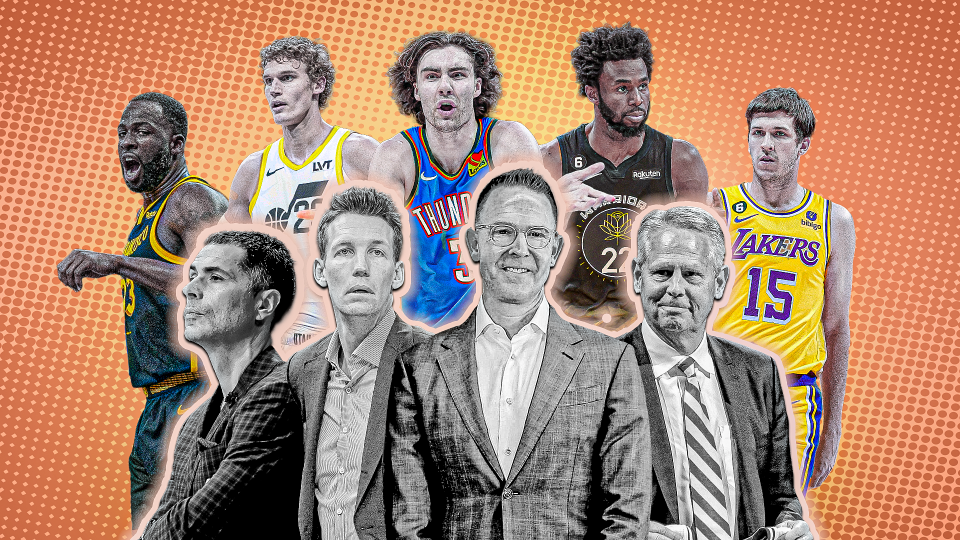
With the deadline roughly three weeks away, trade season has already begun, and with half of the regular season already played, it is increasingly clear which direction every NBA team is headed in. And for those for whom it remains unclear, the next month is an important window in which to decide.
Continuing from part one and the Eastern Conference, here is a breakdown of each Western Conference franchise’s situation ahead of the deadline, some of their potentially available players, and whether we can expect each team to be active or not.
Dallas Mavericks
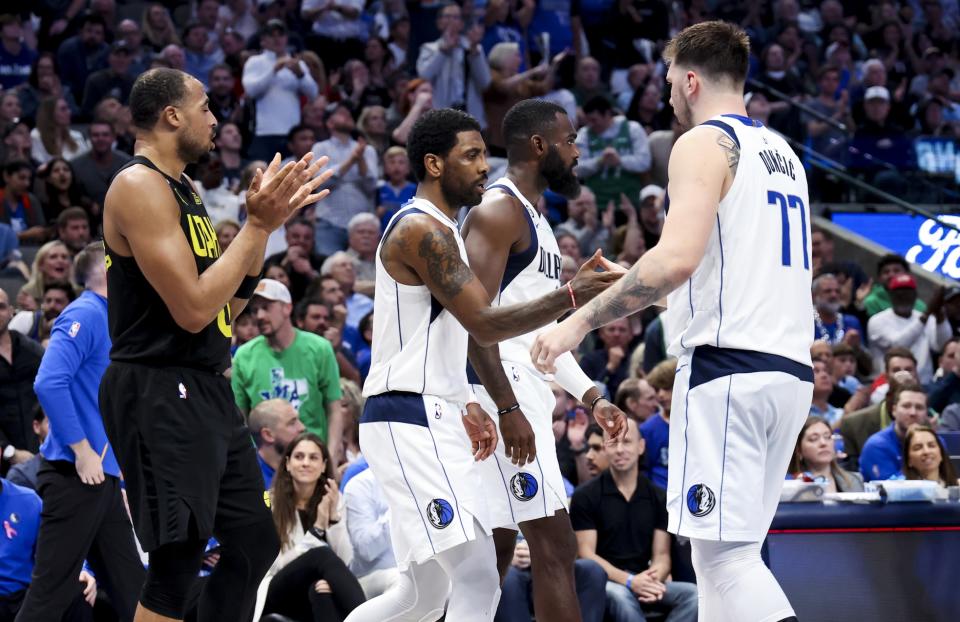
After a bit of unrest in recent seasons, the Mavericks are in quite a nice place currently, and it perhaps works in their favor that they have such distinct needs.
Specifically, it is widely understood at this point that they are in the hunt for frontcourt additions to pair with the foundational duo of Luka Doncic and Kyrie Irving. Rookie Dereck Lively is doing a very solid job in his first season at protecting the paint and clearing the glass, but the declines and injuries of Maxi Kleber and Dwight Powell are leaving him too often on his own. And with due respect to the solid Derrick Jones Jr, the power forward spot is a work in progress, both immediately and in the future.
Dallas’s cupboard of potential trade assets with which to recruit this help is not the best. They owe a lot of future draft capital to other teams, and at best could offer either their 2026 or 2027 first-round pick and Toronto’s 2025 second-rounder, which is not a great starting point to build trades around. Josh Green, Olivier-Maxence Prosper, and Jaden Hardy have had their moments, but have not cemented their places on the team, and nor have Richaun Holmes or Seth Curry, who have disappointed. Therefore, while the long-standing Tim Hardaway Jr is a valuable and important shooter and not someone Dallas will want to be parted from, he and his 2024/25 salary of $16,193,183 might prove to be important outgoing pieces in a deal. After all, his value is not negative.
They may have missed out on both Pascal Siakam and OG Anunoby, but the Mavericks are still shopping what they can. Expect something to get over the line before the deadline, something bigger and more productive than the acquisition of Grant Williams. The money is there, even if the draft capital isn’t.
Denver Nuggets
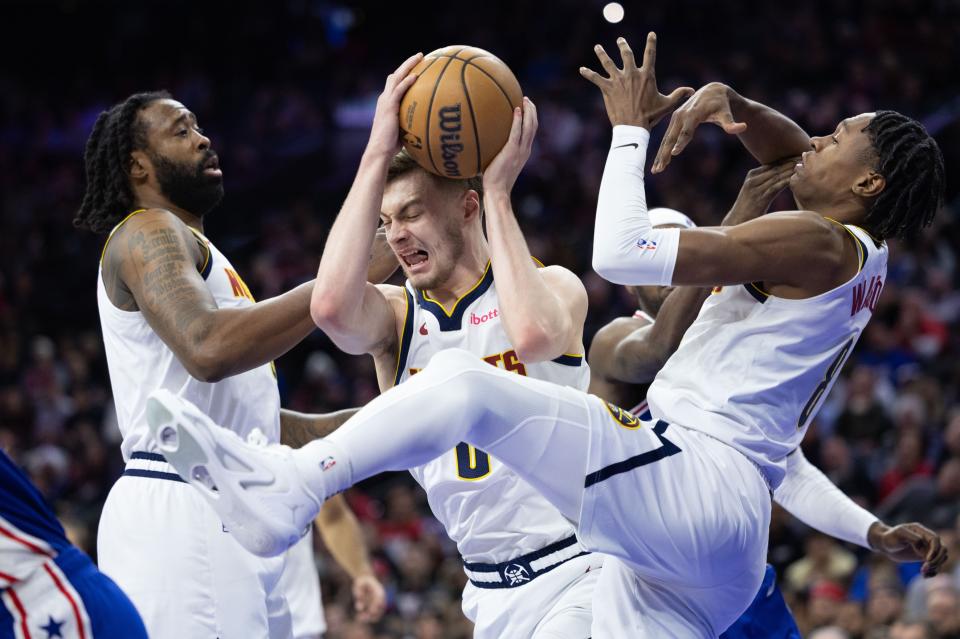
More so than most if not all defending champions, the Nuggets have let the youth take a turn. Resulting from a combination of circumstances, opportunity, cost, and perhaps a conscious effort at staving off “the disease of more” that can plague veteran winners, Denver has 11 players with four years of less experience on its roster, including four rookies.
In particular, second-year players Peyton Watson and Christian Braun on the wing have been rotation guys all season long. The two have combined for over 1,500 minutes played in the season already, an amount that will greatly increase in the second half of the season to keep Aaron Gordon and Kentavious Caldwell-Pope in prime condition for the playoffs. Younger players are, by and large, more mistake-prone, something cured through reps and experience, if ever it is cured at all; Braun and Watson however are advanced decision-makers for this point in their careers, with room to grow further. They embody and justify the Nuggets’ push toward youth that might alleviate the need for another mid-season trade.
If this strategy works, it is huge for keeping open a championship window. Many a possible dynasty is curtailed early by greed, apathy, rising costs and internal politics – keeping things young and fresh around the margins of the roster comes with the added benefit of being cheaper, itself a key part of staying at the top. There has not been a lot of chatter regarding the Nuggets in the rumors market – they would of course take back recent Toronto Raptors acquisition Bruce Brown if they could, but have no realistic way of matching his $27.2 million salary given their own financial picture – and perhaps this is due to less in the way of need, given their strategy youth.
Like every team, an extra shooter, an extra big wing, more defense, more experience and more transition athleticism would all be welcome. But nothing is that sorely needed, and Denver’s internal growth potential outstrips that of its peers.
Golden State Warriors
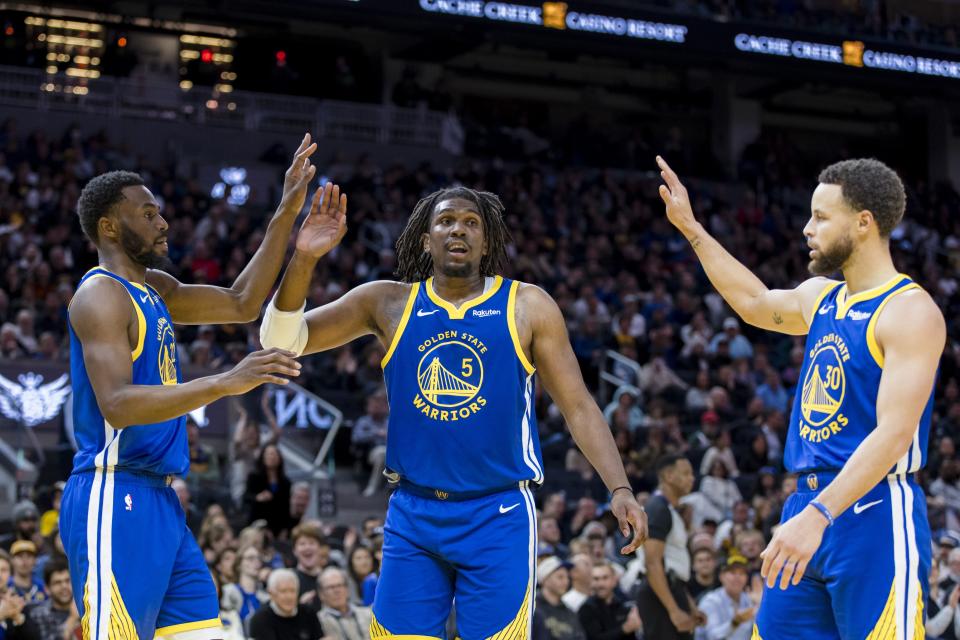
After a decade in and around the top, the Warriors are broken in a way that might not be fixable. The core of Stephen Curry, Klay Thompson and Draymond Green got old, expensive and hurt, while the aura is long gone, and replacing it are unignorable boos. It is also extremely hard to know how to fix all this.
Sufficiently troubling is the trio’s decline that it is hard to find a realistic infusion of external talent via trade or signing that can get them back into contention. This is due in part to the amount that needs doing, particularly defensively, but also because of how little the team has to work with, given its historically high levels of salary spending and the forgoing of so much of its future assets already. The much-declined Chris Paul was not the cure, and the once-positive residuals of the Andrew Wiggins trade feel like things of the distant past given his career-worst campaign to date. Right now, they are going nowhere, while costing unprecedented amounts of money to do so.
The Warriors, then, have a choice. Let the Steph Curry era wind down naturally, even with injuries, as the LA Lakers chose to do with the late great Kobe Bryant. Or go the other way and get what they can while they still can, as the Portland Trail Blazers did with Damian Lillard. Whichever path they choose will have its merits, in both basketball and business terms; however, both options may come with a new-found priority to cut costs. Players such as Kevon Looney, Dario Saric, Gary Payton II and Donte DiVincenzo are the sort of quality role players on mid-range salaries needed to flank the next competitive Warriors team, but if that next competitive Warriors team is never forthcoming, those players instead become surplus players taxed at repeater rates.
It, therefore, would not be a surprise to see the Warriors go the other way for once, keep the youth, and make cost-cutting moves, rather than continue to try and rustle up a “fourth guy”. The punitive effects of the repeater tax and the new second apron were designed to force this, and it takes very extenuating circumstances for a team to defy those. For the Warriors, those circumstances no longer apply.
Houston Rockets
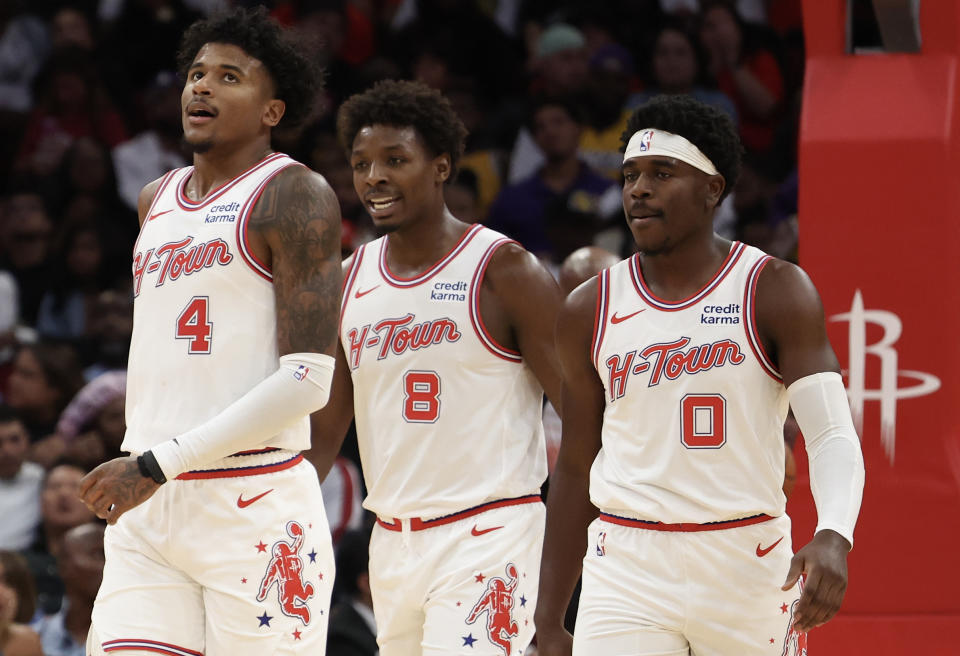
Houston was unabashed in its desire to get out of the basement over the summer, and the near-.500 record at the near-halfway mark is evidence that it has worked. Replacing it, however, is the dreaded middle ground. No longer will high draft picks such as Jalen Green, Jabari Smith Jr and Amen Thompson just appear on the annual horizon. Now, it gets tougher for the Rockets to move in any direction.
Nonetheless, the overall direction, difficult road trips notwithstanding, is upwards. By virtue of both the James Harden and Chris Paul trades of the distant past, the Rockets’ future draft pick situation is confusing and muddled, but broadly profitable by this stage. That, combined with the aforementioned trio plus the talented Alperen Sengun in the middle and the young forward duo of Cam Whitmore and Tari Eason, sees the Rockets still have plenty of room for internal growth. It is OK to be in the middle ground as long as the direction of travel is ahead.
Those moves, though, have put the Rockets in something of a state of flux. Players such as Jeff Green, Victor Oladipo, Jae’Sean Tate, Aaron Holiday, Boban Marjanovic and Reggie Bullock stand at odds with the predominant timeline without providing all that much in the present and should be considered available, but because they do not provide much in the present, their value may be slim to none.
When viewed in purely financial terms, however, mid-level trade opportunities can be seen. Oladipo’s $9.45 million contract is expiring, and Green’s $9.6 million team option can be declined to make his expiring too. Those two plus some combination of the myriad outstanding picks could be made into a package for a decent-if-not-needle-moving upgrade, such as the sort that Brooks was back in the summer.
It is therefore not a surprise to see Houston’s name attached to Harrison Barnes of the Sacramento Kings as a potential target. That sort of salary and that sort of player is the sort of deal that the Rockets can make.
Los Angeles Clippers
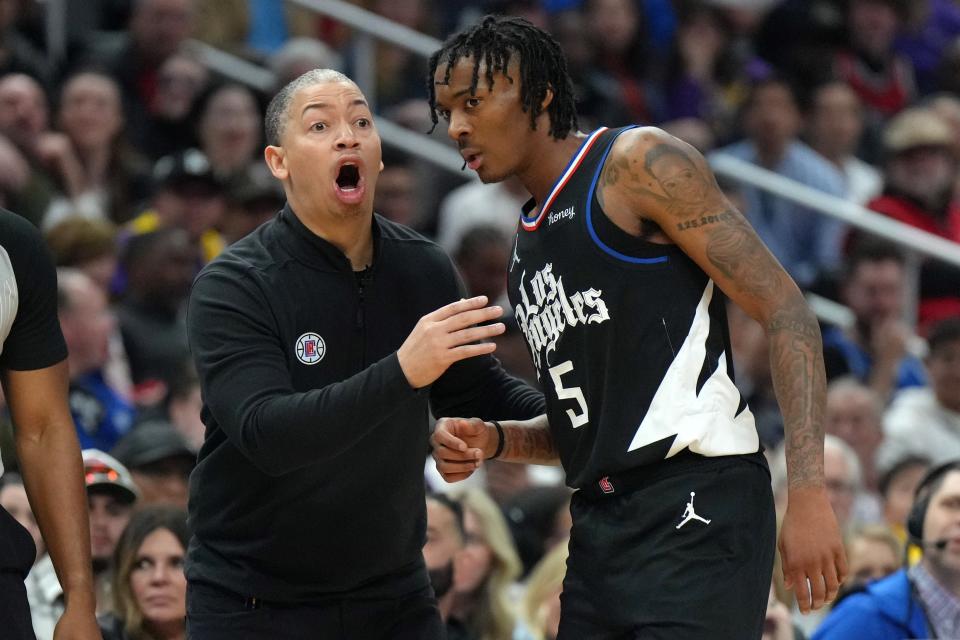
You must imagine, having laid it all out there in their early-season acquisition of James Harden, that the Clippers have very little left in the gun. They certainly do in terms of their future draft picks, having traded nearly every pick it is legal to trade in the pursuit of their immediate goals. And nor do they have much in the way of financial wiggle room; Steve Ballmer may be very willing to stump up the cash for their $202 million payroll, yet that payroll comes with an inflexibility through applicable Collective Bargaining Agreement restraints that cannot simply be spent out of.
That said, having invested so much in the on-court product, they might as well keep going. It will not be easy to do, yet if the Clippers can turn the contract of PJ Tucker (who at this point has seriously limited impact on the court) into something of more tangible benefit, attaching whatever picks they have left and further stacking up on payroll if needs be, they will. Mason Plumlee’s $5 million expiring contract can add a small extra amount of trade value, while Moussa Diabate, Brandon Boston, Kobe Brown and Bones Hyland should be expecting to be offered to all and sundry.
Considering that the Clippers already have $171 million invested in their 2024/25 roster without so much as a dollar invested in Harden, any trade acquisition they make may only be another rental. But someone like Kelly Olynyk represents a sufficient upgrade on Tucker that he will significantly improve the Clippers’ title chances in 2024. That is if they can just about put together enough for one more trade package. It will not be easy to outbid the plentiful competition, and it might not be possible at all.
Los Angeles Lakers
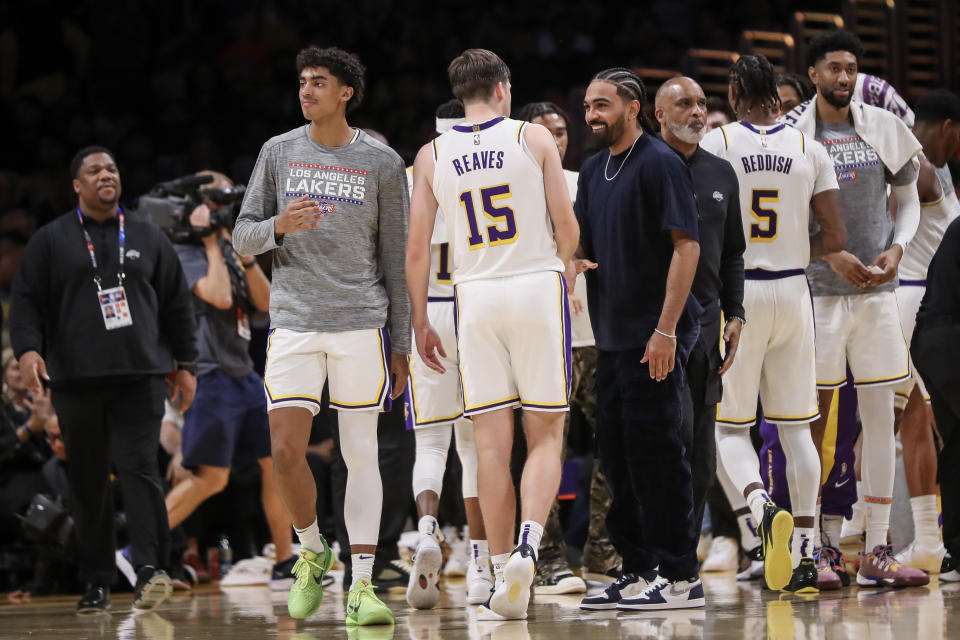
Since winning the inaugural In-Season Tournament, the Lakers have faltered. They have managed only a 7-12 record in that time, with two four-game losing streaks along the way. And thus, the permanent urgency surrounding the franchise to get busy in the market is particularly elevated right now.
The problem, though, is that Austin Reaves is being marked as essentially unavailable in deals. If he is unavailable, then big deals become much harder to consummate. To be sure, Reaves – despite his relative youth – is an important part of the time, a dynamic offensive player and a proven big-game player already. Yet for the Lakers to acquire more of the same, they have to give up something good, and if Reaves is deemed not to be it, that does not leave much.
The rumor that the Lakers are offering D’Angelo Russell for Dejounte Murray speaks to a few things. First and foremost, Russell’s availability. Second, the a lack of other meaningful pieces that can be made available (as surely the last team that needs Russell is the one already with Trae Young). Thirdly, they are courting all the available All-Star caliber players, as per usual. And fourthly, they are willing to keep loading up on future payroll, given that Russell’s contract expires after next season.
At least three of those things are correct. The Lakers will however have a greater chance of achieving what they want if they allow for scenarios in which Reaves is on the table too. Not because he is not good. But because he is.
Memphis Grizzlies
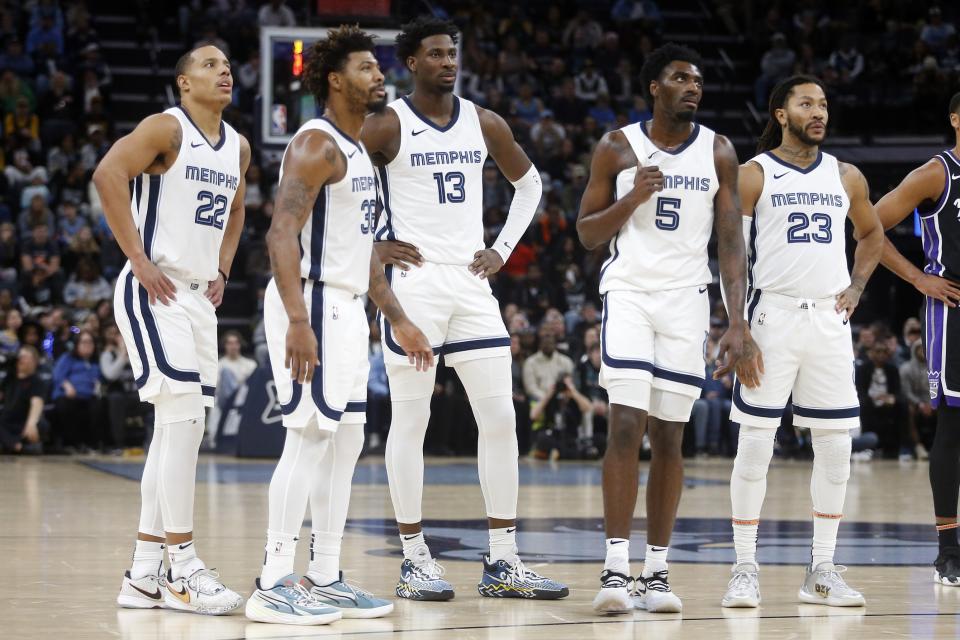
As explored in a recent article, the one upside to the Grizzlies’ lost 2023/24 season is the creation of two giant Disabled Player Exceptions that can be used to facilitate some asset-gathering trades. It does not do anything significant to offset the loss of Ja Morant on the court – and, before him, Steven Adams – but those DPEs combine with the $7,492,540 remaining on the Dillon Brooks trade exception to make for some good options when it comes.
Considering the draft capital spent on the offseason Marcus Smart trade – one which, through no fault of Smart’s, is looking like a substantial loss on investment so far – any opportunity to regain some of those draft assets by taking on salary through these exceptions should be explored. A lost season should at least not be a costly one.
Beyond that, though, there is not a great incentive to change all that much. Even among the disappointment of the year, there is no reason to reverse course; Morant and Adams will return, as will Desmond Bane and Brandon Clarke, and along with Jaren Jackson Jr, the front five will return as an excellent five. Until that time, further reps for the likes of Santi Aldama, GG Jackson and Vince Williams can only be a good thing, and so unless it is some low-stakes salary maneuvering or a trade of Luke Kennard, it is hard to see the Grizzlies doing much before the deadline. There is not much point when the season is gone anyway.
Minnesota Timberwolves
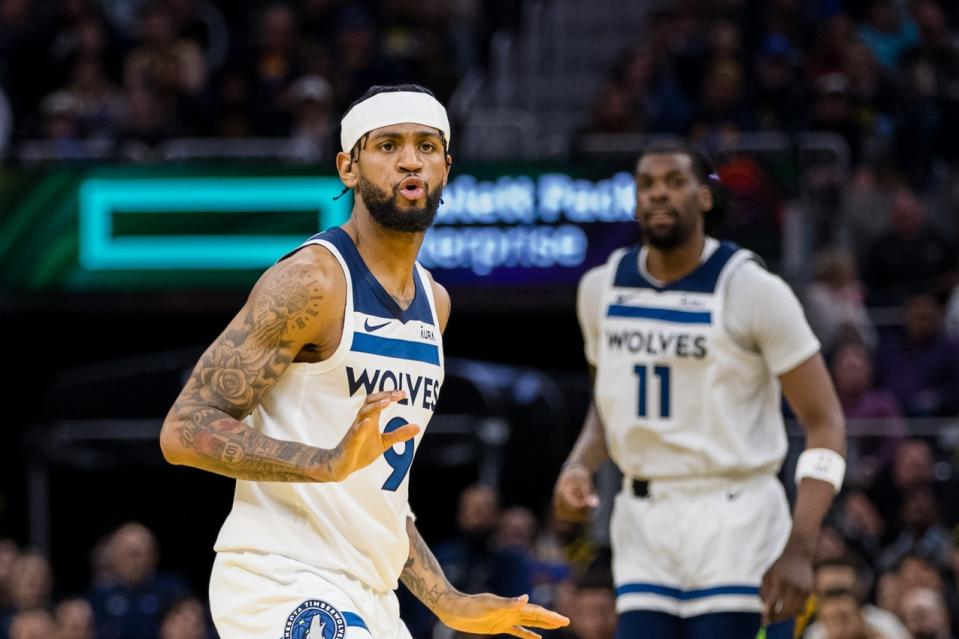
Where once they were doubted by so many, the Timberwolves have proven the construction of their team by putting together the best half-season in franchise history. Rudy Gobert has bounced back to his best, Karl-Anthony Towns is working well alongside him, Anthony Edwards keeps getting better, and Mike Conley is as solid as a rock. The Timberwolves have the best record in the Western Conference and the second-best in the NBA, with the league’s best defense, good health, and an incredibly clearly established rotation. Everything is good right now and not to be ruined.
Nevertheless, perfection never exists, and perhaps the Timberwolves would still like to add. The relatively young backcourt and wing depth options of Nickeil Alexander-Walker, Shake Milton, Troy Brown Jr and Jordan McLaughlin all have their uses and could perhaps shoulder bigger burdens than they currently do, especially if Milton gets his shot back. Yet they could also perhaps use some help themselves, particularly at this point, to provide cover for the frontline players and keep them fresh for the postseason run.
The obvious trade candidate is Wendell Moore Jr, not a part of that group and thus available to anyone who values his potential over the more immediate contributions of a veteran. Salary matching will be hard, though; Kyle Anderson, whose $9,219,512 expiring contract would otherwise be ideal in deals, is too important for that. To go big will be hard, given the importance of the front six – it may therefore be a quiet trade deadline for the Wolves, followed by some activity in the buyout market.
New Orleans Pelicans
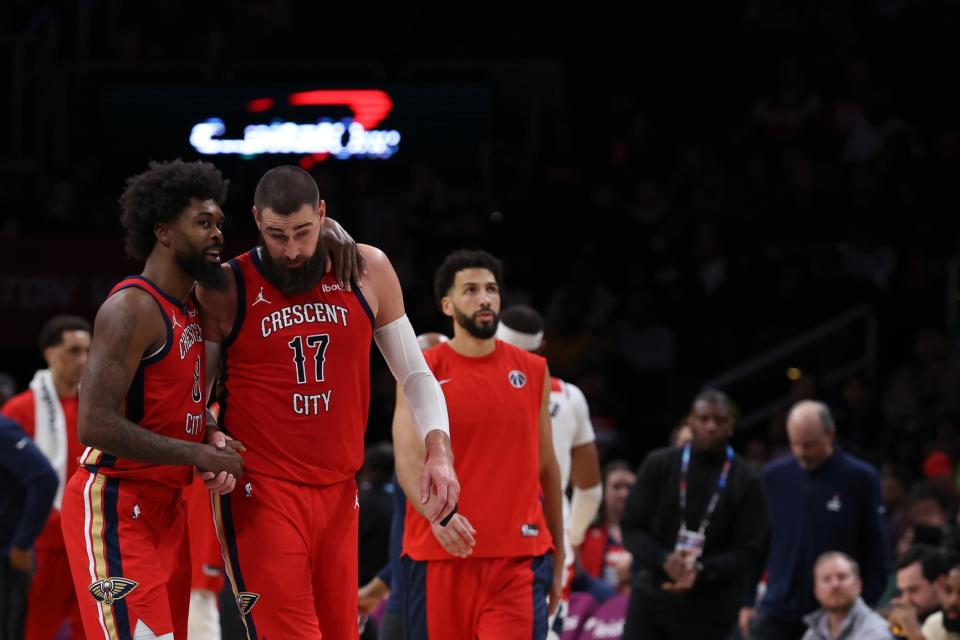
The main issue with the Pelicans heading into the trade deadline may already have been solved. Their offseason business had left them over the luxury tax threshold, not a place that the franchise wanted to be, and they have already made the requisite move to get under by sending Kira Lewis Jr to the Toronto Raptors as an ancillary part of the trade that sent Pascal Siakam to the Indiana Pacers. No salary was returned, and only a single second-round pick was required to sweeten the pot; with that, significant financial savings were made, and nothing in the rotation was lost.
There exists a good chance that this will be the only move the Pelicans will make. Things are going OK currently; inconsistency and late-game execution issues notwithstanding, the team exhibits a good level of overall balance, the vibes are good, and even Zion Williamson is getting better defensively. A decision must be made soon on the future of Jonas Valanciunas and his expiring $15,435,000 contract – too important of a player to lose, too senior of one to overly commit to – and perhaps pre-empting next January’s similar decision on Brandon Ingram may also be a smart bit of forward planning.
Neither scenario necessitates making trades, though. It might just be extension season for the Pels.
Oklahoma City Thunder
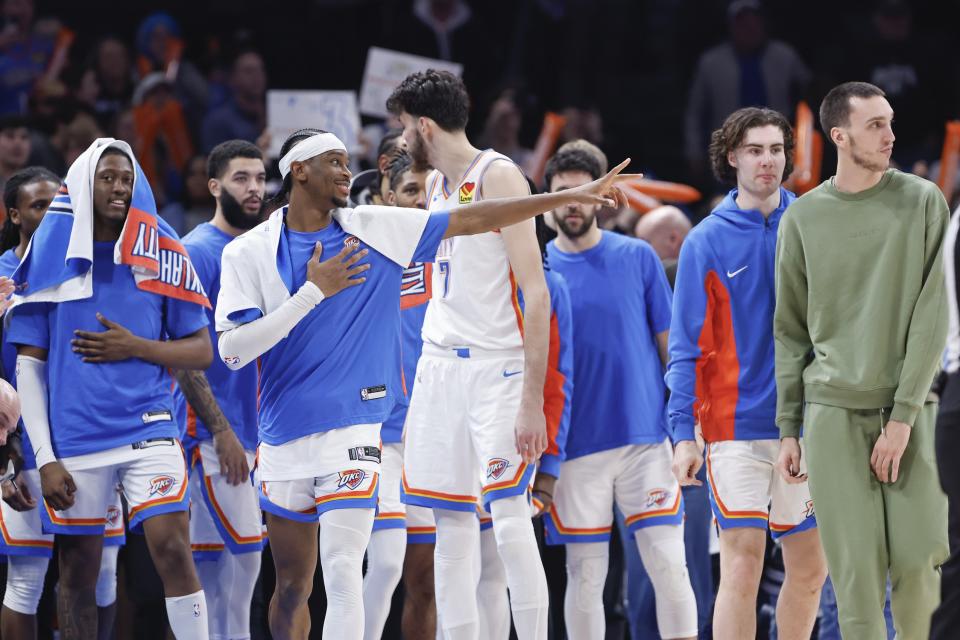
Several years of intense asset accumulation and often optimal utilization of them have seen the Thunder work themselves into an enviable position. They have almost all their future draft picks, dozens outstanding from other teams, some payroll flexibility, the second-youngest roster in the league and the second-best record in the West. Nothing is broken and nothing needs fixing.
There does however become a real threat of diminishing returns on all that draft capital if the quantity is not converted into quality. Roster spots are finite even if acquisitions are not, and consolidation of all that potential/perceived value into tangible quality on the court must happen at some point to both get value from the past and raise the ceiling on the future.
Given how good the 2023-24 Thunder already are, that time is probably now. With the Warriors’ time at the top done and no other dynasties in sight, there is a title window open both now and through the next 5-10 years of the Shai Gilgeous-Alexander era. Replete with what feels like half the draft picks in the league, the Thunder are poised to take advantage.
This is not to say that everything in the immediate term is entirely settled. For all the individual brilliance of Chet Holmgren, his rebounding rate is a weak point. If the Thunder can use some of their draft pick excesses to shore up that area for someone like Wendell Carter Jr, they might – their focus in the market, though, will surely be on going big. Really big. Lauri Markkanen big, if possible.
Portland Trail Blazers
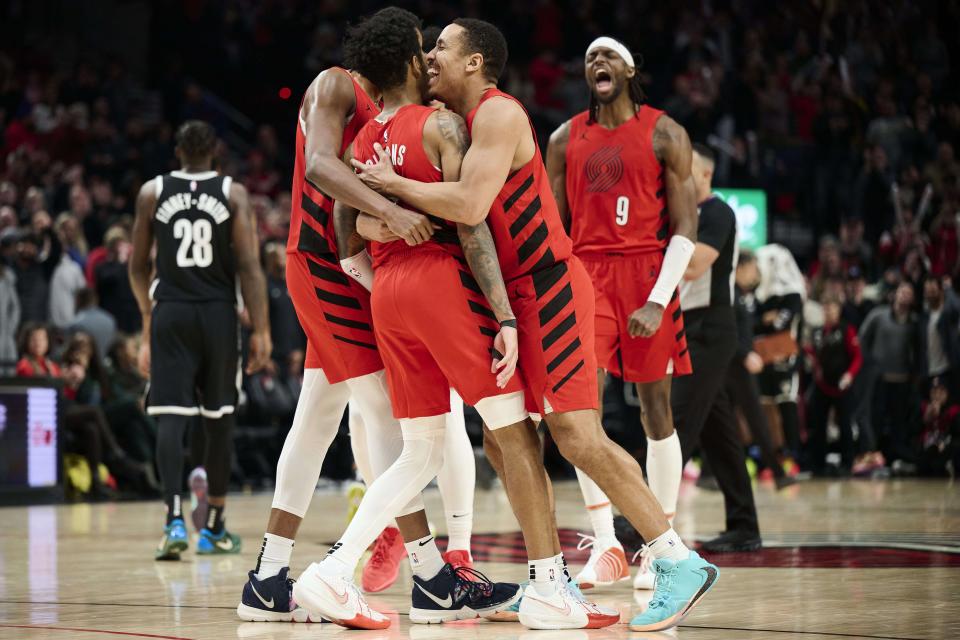
Expect the Blazers to be sellers at the deadline of their few veteran players. Having finally drawn an end to the Damian Lillard era, they would be fools not to keep going down the new road.
This does not necessitate a fire sale, of course, but there are obvious candidates to be made available in trade, not least of which is Jerami Grant. The soon-to-be-30-year-old forward is on a different timeline from the roster around him, while also being a 20-point scorer on a long but manageable deal. His trade value is at its highest, at a time when his importance to his current team – considering the benefits that would come from fully bottoming out – is at its lowest. It is said that the Blazers are “not seriously considering” offers on Grant currently. Time will tell if that counts as posturing because they should be.
Similarly, Malcolm Brogdon was acquired in the follow-up Jrue Holiday as an opportunity pickup rather than a piece for the future, and the same is perhaps true of the center duo of Deandre Ayton and Robert Williams, acquired more through circumstances than design. Both should be considered available for resale, although, in the case of Williams, his heavily curtailed injury might see his value too low currently to make it worthwhile.
There may also exist a market for Matisse Thybulle, considering the permanent need for wing defense among competitive teams, and the Blazers also have four trade exceptions and a $5.785,715 Disabled Player Exception for Williams with which to facilitate other’s trades for future compensation. They should make some moves in the next three weeks. But not the ones in which they buy.
Sacramento Kings
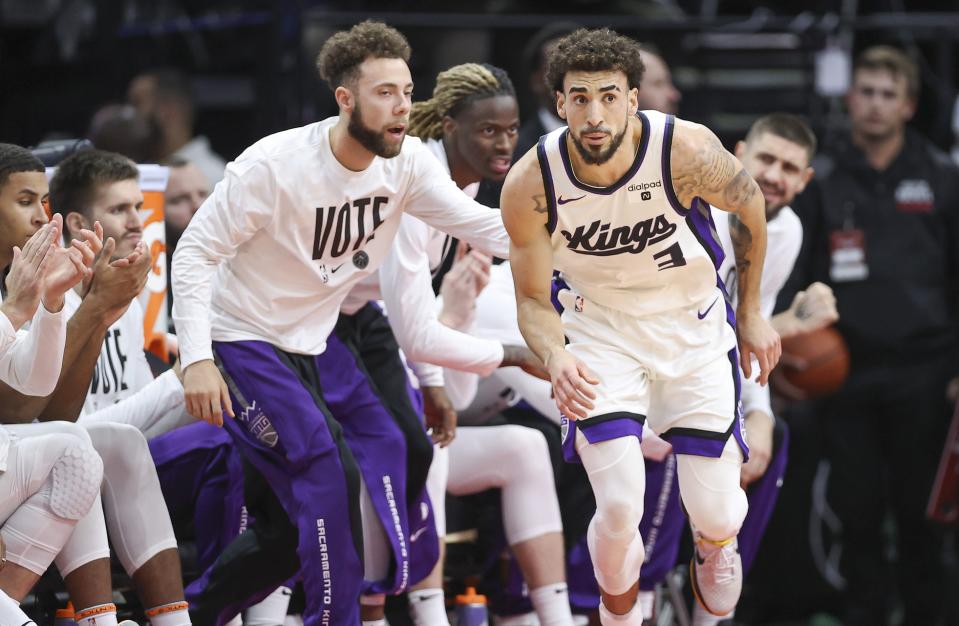
The 2023-24 Kings team is pretty good in totality, but is now looking at the possibility of anywhere from a No. 5 to No. 10 seed in the West, where once they were hoping to be fighting at the top.
It follows logically that the best way to get back to that top is to make another deal. Right now, the Kings are too often listless on defense and spotty on offense, lacking in form and function, finding ways to blow games, and in need of a rotation change. Yet they have some financial wiggle room under the luxury tax, at least for now, and might look to capitalize.
They would therefore love to convert recent high draftees Chris Duarte and Davion Mitchell – neither of whom has made it into impactful frontline rotation players – into something palpable. Yet precisely because neither has leaped, their value is going to be low. Adding someone like Kevin Huerter (who is bouncing back after a slow start of his own) might help to create the foundations of a package for someone like Kyle Kuzma or Jerami Grant, and aside from owing their next first-round pick to the Atlanta Hawks, Sacramento’s draft pick situation is good. But how much of that do they want to give over to provide another short-term boost for a team on the downswing? Is the issue with the team one about upgrading Barnes for Kuzma, or is it a more fundamentally flawed defensive construction? How urgent can a team making Keegan Murray off-limits truly be?
Nevertheless, the Kings should be expected to be buyers at some level in this market. Neither selling nor standing pat makes more sense.
San Antonio Spurs
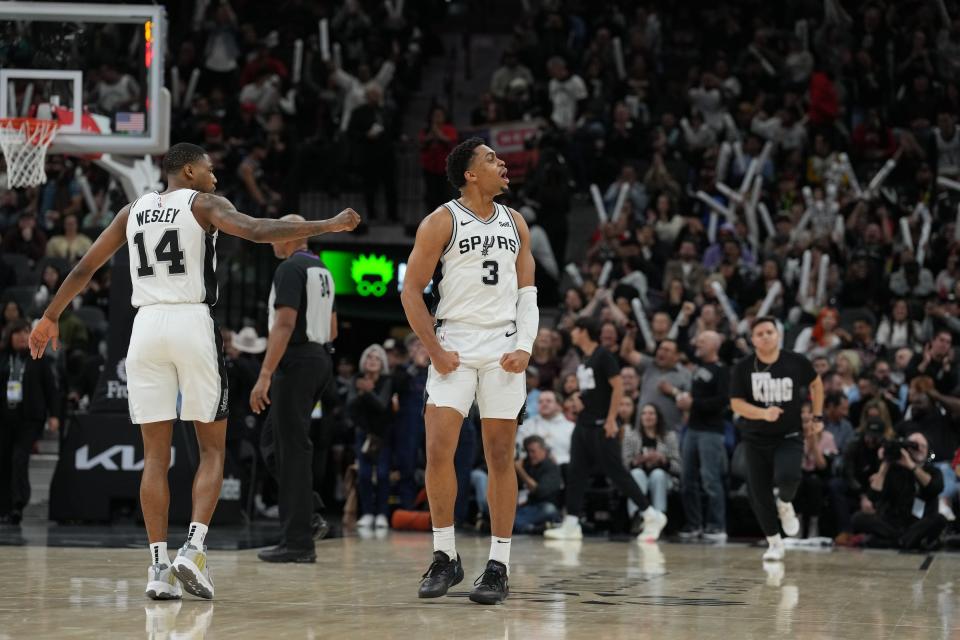
The only thing that matters for the San Antonio Spurs in the immediate term is being able to maximize the development of Victor Wembanyama. They have seemingly decided that playing Jeremy Sochan as a form of point forward-guard is a key part of that, the merits of which are best discussed elsewhere. Yet if those two things are both deemed to be the case, the onus falls on the rest of the roster to cohere perfectly with that pairing. And the key to doing that is plenty of ball movement.
With this in mind, Keldon Johnson might be the odd man out. Johnson is a good player and, it seems, a favorite of Gregg Popovich, yet his shot selection and tendency to stop the ball make him more of a Dillon Brooks type than is desirable alongside two such unique development projects, especially considering the size of his new contract. In terms of changing the make-up of the top of the rotation, his spot may be the most fragile.
In terms of trade assets, the Spurs have plenty of expiring deals to work with. Each of Doug McDermott, Reggie Bullock, Khem Birch, Cedi Osman, Cameron Payne and Josh Primo are coming off their books this summer, and while four of those have already been cut and thus cannot be traded, the other two (McDermott and Osman) can and might be. Extensions to Devin Vassell and Zach Collins kicking in next season prevent all of that money from being reinvested, but the combination of the expiring deals, the fact that they have three years before Wemby needs paying, the lack of urgency that comes from a lost season and having a starting point of one of the league’s lowest payrolls allows the Spurs to take on unwanted contracts in exchange for draft picks and redraft players. To be buyers beyond that seems very unlikely.
Utah Jazz
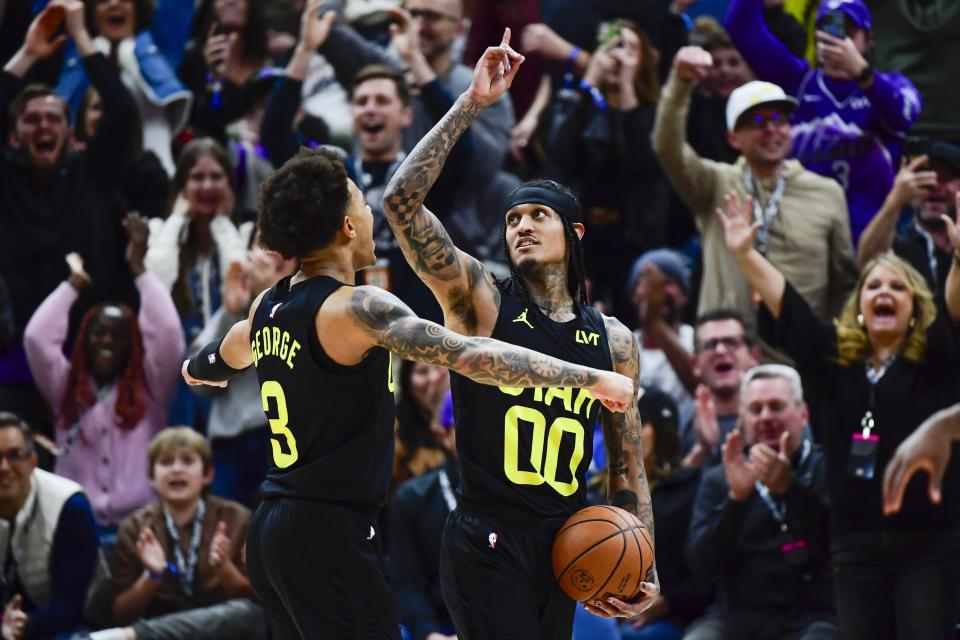
After their extensive maneuvers in the 2022 offseason that ended the Rudy Gobert and Donovan Mitchell era, the Jazz found themselves with many good-if-not-great players, enough to put together a good-but-not-great season that was better than most expected. The problem is, 18 months later, that is the level they are still at.
This is a relatively new problem considering their poor play in the first quarter of the season and is a good problem to have, given that it speaks to internal growth and incumbent quality of both players and staff. It does however create a poser. Not every team in the NBA’s middle ground needs to be sellers, nor do they need to act with overly intense urgency. The Jazz may however want to cash in on certain players, while also adding to the younger half of their core of good ones.
To that end, Jordan Clarkson and Kelly Olynyk should be considered available, particularly so in the case of Olynyk, whose $12,195,122 contract expires this summer. So too does the $11.02 million of Talen Horton-Tucker, a good player but also a luxury of one alongside the similar Collin Sexton, who will not be as tradeable (although there may yet still be a market). Alongside a great spread of future draft picks from the Gobert and Mitchell deals, plus young players such as Ochai Agbaji and Taylor Hendricks who can be commodities as both players and salaries, the Jazz have options should they choose to be buyers.
They may indeed choose that and pick up a Kyle Kuzma-esque competitively priced veteran. They may just choose to be sellers, even after the good second quarter. Or they may choose to be both. In the year and a half until Walker Kessler and Lauri Markkanen (once rumored to be available, but no longer) need paying, the Jazz will have opportunities to add to their good foundation before the cap freedom dries up. This does not have to mean big deals, nor does it prevent getting more draft capital for the Olynyk types if so desired. But all the flexibility should give them several hundred different scenarios to choose from, and about three weeks to do it in. Just do not settle for this level.
[listicle id=2610894]
[listicle id=2489410]
[listicle id=2489369]

